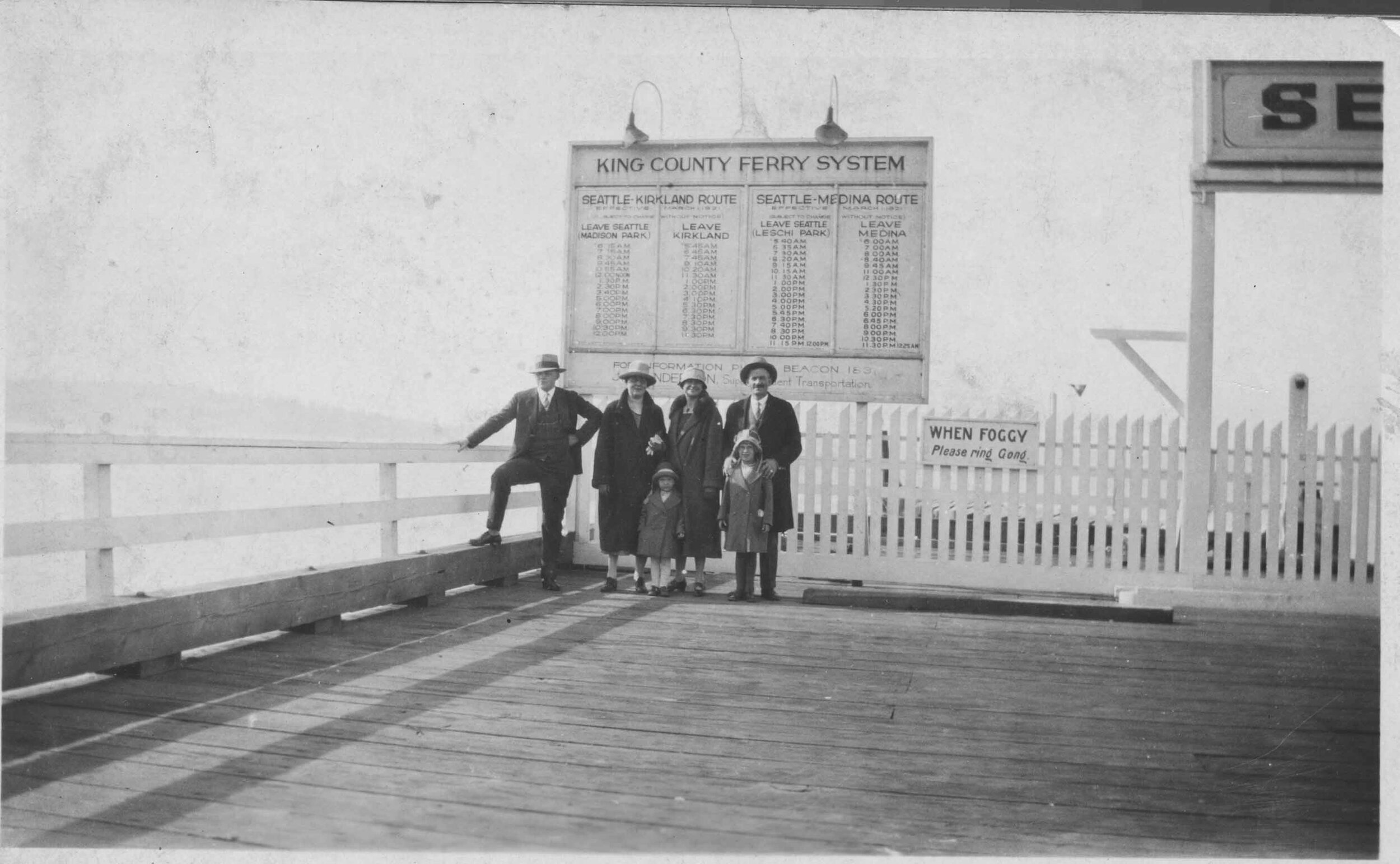The city of Bellevue is fortunate to have five historic cabins, all located in Bellevue City Parks. They were built between the 1880s and the 1890s: Fraser Cabin at Kelsey Creek Park; Hans Miller Cabin at Robinswood Park; Sharp Cabin at the Bellevue Botanical Garden; Thode Cabin at Larsen Lake; and the Burrows Cabin at Chism Beach Park. Only the Fraser Cabin is open for viewing.
The Fraser cabin was originally built in 1888 by two Norwegian loggers who were known for their ability to build log bridges across a ravine in one day. The 16 ft. x 16 ft. cabin was located near the present day Northup Way and 124th St. about a ½ mile from the Fraser’s home. It was built for Daniel Fraser’s sister-in-law, Fanny, and her new husband Steven Rathbun. The newlyweds lived there about a year before moving to Massachusetts.
2014.005.009 - Crowd gathered outside of the Fraser Cabin, Boy Scouts flag on flagpole. Undated.
When the Fraser’s main house was destroyed by fire in 1890, the cabin was moved to the homesite and later converted to a horse barn. In 1947, Daniel’s son, Don, moved the cabin to the corner of 126th NE and NE 7th. The logs were taken down and numbered as to assure accurate reassembly.
Eventually, Brooks Johnston purchased the property and used the former cabin as a horse barn. Johnston donated the cabin to the King County Parks Department in 1966, but there was a lack of funding for moving it to Marymoor Park. In 1974, Siegfried Semrau, Director of Parks and Recreation for the City of Bellevue Parks Department, accepted the cabin and it was moved to Kelsey Creek Park. Thanks to many generous donors, the cabin was reassembled with new walls, floor, roof, door, and windows and in May of 1975, the City of Bellevue held a Bicentennial Community Designation ceremony at Kelsey Creek.
L 88.064.007 - Siegfried Semrau, Verna Schembrie, Brooks Johnston with the refurbished Fraser Cabin at Kelsey Creek Park. Circa 1974.
Because of flood mitigation, the cabin was moved again in 2008 to its present location just south of the barns. Thanks to some creative engineering, the entire structure was moved up the hill and placed on a new foundation. A new ramp was built to make it more accessible to all.
Eastside Heritage Center opens the cabin during major events: Sheep Shearing and the Farm Fair. It is also open to the public one Saturday a month from May through September.
Resources
Eastside Heritage Center Archives



















